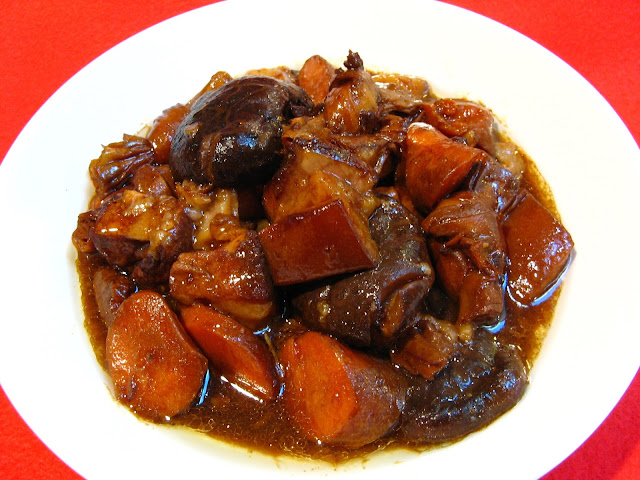This is a really easy recipe to make, since just about all
the ingredients are pre-packaged and ready for use. Mixed seafood and Italian sausage
are the main ingredients in this pasta dish, which produces the tasty seafood
and meat combination commonly found in Chinese dishes. The Italian sausage is
available hot or mild in a single package, so unless you buy the individual sausage
package (in which case the casings should be removed), all you do is open the
package. As is usual for my pasta recipes, I use a wok to stir fry the pasta
before adding the sauce. Making a pasta dish is no different to me than making
chow mein – the techniques are the same, I’m just using a different sauce to
make the noodles.
Mixed seafood is available in the frozen section at your
local Asian market. The packaged mixture is inexpensive and intended for use in
a hot pot or soup, but after thawing can easily be used in stir fries or, in
this case, pasta dishes. Depending upon the brand available, the mix of seafood
varies. The usual mix has at the very least fake crab meat, squid, and shrimp. Additionally
oysters, clams, octopus, and other seafood is in the mix depending upon the
manufacturer. So compare the ingredients of the brands available at your local
Asian market before buying a package.
Enjoy!






